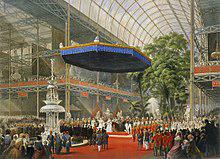
History Group 1 began in-person meetings last year after 2 years of zoom meetings. Our current period is ‘The Victorians into the Edwardians’.
Each month, a member of the group gives a talk on a topic of their choice from the period; this is followed by discussion.
This year topics include: St Pancras Station, The Creation of the Labour Party, The Life & Times of William Wordsworth, The Demise of the Workhouse, Coronations, Lord Melbourne & Queen Victoria, The Arts & Crafts Movement, Gilbert Scott, & The Art Nouveau Movement.
Our venue is in Wirksworth on the third Thursday of the month from 10-12.00. We share the cost of room hire & contribute to refreshments.
As several member of the group are vulnerable in terms of covid, we all test on the day of the meeting & are careful to sit at an appropriate distance from each other in the well-ventilated room.
We are discussing possible outings/visits this year.
You can contact the History Group 1 coordinator, Janet Pidgeon, by e-mail, or by telephone on 01629 824912.
This group currently has one vacancy.
History group 1 have been studying Victorian Britain
The Great Exhibition 1851
| My talk explores the genesis of the Great Exhibition of 1851, for which Prince Albert, Queen Victoria's husband is normally credited. However, equal credit should be bestowed on Henry Cole, who was not only the assistant record keeper at the Public Records Office, but was also the Editor of the Journal of Design. Henry was also a council member of the Society of Arts and through that office was introduced to Prince Albert in 1846 through whom the Society received a Royal Charter and changed its name to the Royal Society for the Encouragement of Arts, Manufacturers and Commerce. The Society arranged several small exhibitions to promote their cause and impressed by the French 'Industrial Exposition' of 1844, Henry obtained Prince Albert's support to staging a similar event in England. Initially the Government was unenthusiastic but bowed to public pressure to investigate the idea and became more enthusiastic when they realised the event would be self-financing. With national pride dictating an exhibition to better the French on a design competition for the exhibition building was organised. The winning design was based on Joseph Paxton's design for a glass and iron conservatory produced for the Duke of Devonshire and became popularly known as the Crystal Palace. |
 | It took 5000 navvies to erect the immense structure in Hyde Park but work was completed on time and the Great Exhibition was opened by Queen Victoria on 1st May 1851. The Exhibition ran until October of that year and drew some 6 million visitors to see over 100,000 exhibits. The profits from the event subsequently helped to finance a complex set of Museums in South Kensington. The Crystal Palace was subsequently moved to Sydenham but was destroyed by fire on 30th November 1936. The memory of its glorious past survives in that area of London, which is now known as Crystal Palace. John Coulter; History 1 |
.
